Archivo de noticias y eventos
201 - 250 de un total de 1805
También puede acceder a la lista de noticias publicadas en los medios relacionadas con el Instituto de Astrofísica de Andalucía - CSIC.
Pages

|
23/03/2023 - 12:30
SO coloquio: Investigating the impact of quasar feedback on the central kiloparsecs of galaxies Active galactic nuclei (AGN) feedback is the effect that nuclear activity produces in the interstellar and circumgalactic medium of galaxies. Different modes of AGN feedback, which can be broadly divided into radiative/quasar and kinetic/radio, are now considered key processes in the evolution of massive galaxies by regulating black hole and galaxy growth. Indeed, a wealth of observational evidence demonstrates that feedback from supermassive... Dr. Cristina Ramos Almeida |

|
16/02/2023 - 12:00
School visit School visit Sara Garcia. |

|
16/03/2023 - 12:30
An observational study of massive star forming regions at radio wavelengths In their early stages, massive stars have a profound impact on their hosting cloud as reflected by signposts like shocks, bars and shells of swept material resulting from prominent stellar winds, or photo-ionized (HII) regions produced by energetic irradiance. This activity must be taken into account in the study of the mechanism of formation of either massive stars or nearby lower mass companions affected by such harsh conditions. It is known... Josep Maria Masqué |

|
09/03/2023 - 12:30
When accretion is as vital as extreme: from massive young stars to binary black holes Accretion is vital for understanding the properties of a number of astrophysical objects, including massive young stars and black holes. For the former, accretion drives the stellar mass growth and multiplicity through gas fragmentation. It also powers strong outflows that regulate the interstellar medium. For black holes, only accretion allows for electromagnetic detection. Hence, the multi-messenger astronomy, for which the loudest sources of... Dr. Raphael Mignon-Risse |

|
23/02/2023 - 19:00
Contaminación Lumínica: Cuando nuestras estrellas más cercanas no se ven entre ellas Conferencia de divulgación sobre las consecuencias del exceso de iluminación artificial nocturna. José Ramón Guzmán Alvarez |

|
23/02/2023 - 12:30
ALMA: Planned Sensitivity Upgrades, and Molecular Gas Imaging of a z=0.376 HI-Detected Galaxy This talk will cover two distinct topics in progress, one programmatic and the other science: I will first discuss the ALMA Wideband Sensitivity Upgrade (WSU), and then I'll talk about ALMA followup of the highest redshift HI detection in the COSMOS HI Large Extragalactic Survey (CHILES) made with the first 178 hours of observing. With regard to the WSU, the ALMA Project is embarking on a partner-wide initiative to at least double, and... Dr. Jennifer Donovan Meyer |
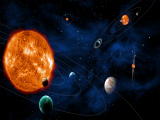
|
30/03/2023 - 12:30
Preparation and Asteroseismic exploitation of the PLATO Mission Thanks to ultra-precise space missions, we are living an era of big scientific discoveries in the stellar and planetary physics fields. PLATO will capitalise on the developments of successful past missions such as CoRoT, Kepler/K2, TESS and CHEOPS that studied stars and their planetary systems. PLATO will detect and characterise terrestrial exoplanets at orbits up to the habitable zone of solar-type stars. Transit measurements and... Dr. Javier Pascual |
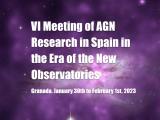
|
25/01/2023
VI Meeting of AGN Research in Spain in the Era of the New Observatories Tras el éxito de las reuniones anteriores sobre AGNs convocadas en nuestro país, el IAA-CSIC acoge esta reunión, que permitirá revisar la comprensión actual en la investigación sobre AGNs |

|
26/01/2023 - 19:00
El cambio climático. Una puesta al día Revisamos el nuevo informe del Grupo Intergubernamental de Expertos sobre el Cambio Climático (IPCC) Rainer Schödel |

|
30/01/2023 - 12:30
SO Coloquio: Dirty Dancing: piercing the dusty environment of merging supermassive black holes It is a posit of modern astrophysics that most massive galaxies host a super- massive black hole (millions to billions of times more massive than the Sun). These black holes affect the evolution of galaxies well beyond their gravitational sphere of influence (which does not extend wider than 1/1000th of the typical galaxy linear size). In turn, the evolution of galaxies affects the growth of black holes through, e.g., galaxy merging.... Matteo Guainazzi |
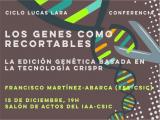
|
15/12/2022 - 19:00
Los genes como recortables. La edición genética basada en la tecnología CRISPR En el año 2012, un trabajo publicado en la revista Science demostró que la tecnología CRISPR podía ser usada de una manera precisa y eficiente en la edición del genoma de un ser vivo. Desde entonces, el método ha llevado a miles de laboratorios a utilizarlo en aplicaciones que van desde biomedicina hasta agricultura. Francisco Martínez-Abarca |

|
02/11/2022 - 04/11/2022
https://home.iaa.csic.es/fundcosmo22/ Granada |

|
18/10/2022 - 21/10/2022
https://www.granadacongresos.com/severoochoa Granada |

|
09/09/2022 - 11/09/2022
https://iota-es.de/esop41/index.php Granada |
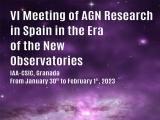
|
30/01/2023 - 01/02/2023
https://www.granadacongresos.com/agn2023 Granada |
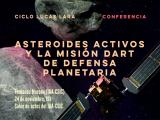
|
24/11/2022 - 19:00
Asteroides activos y la misión DART de defensa planetaria Conferencia de divulgación sobre los asteroides activos, que muestran rasgos tanto de asteroide como de cometa Fernando Moreno |

|
12/01/2023 - 12:30
CARMENES-PLUS: a technical upgrade for CARMENES and the impact on its science CARMENES is a dual (VIS: 550 to 950 nm; NIR: 950 to 1700 nm) high-resolution spectrograph installed at the 3.5 m telescope at the Calar Alto Observatory (CAHA, Almería, Spain). The NIR channel spectrograph uses the radial-velocity method for detecting exoplanets around low-mass stars. Thus, a high thermal stability is required in the NIR cooling system to achieve a high precision in radial velocities. The cooling system was originally conceived... Roberto Varas González |

|
25/05/2023 - 12:30
SO colloquio: To be black, or not? Observational tests of strong field gravity are improving rapidly. This allows us to test whether the compact objects observed in the sky are truly black holes as described in general relativity or some other "exotic" objects. These tests, however, require exquisite theoretical modeling of black holes as well as their alternatives. This talk will discuss two such examples: the impact of the astrophysical environment on black holes and the... Dr. Béatrice Bonga |

|
24/11/2022 - 12:30
SO webloquio: The Milky Way Nuclear Star Cluster The Milky Way nuclear star cluster (NSC) is located within the nuclear stellar disc (NSD) in the Galactic centre. The NSC and NSD are distinct structures of the Milky Way, but also connected to the larger Milky Way structures, e.g. via the inflow and outflow of gas, and the infall of star clusters. Our knowledge of the larger Milky Way structures, Galactic disc, bulge and halo, has expanded in recent years through surveys and dedicated missions... Dr. Anja Feldmeier |

|
07/11/2022 - 12:30
The ASTRI Mini-Array and its Science The ASTRI Collaboration is building at the Teide Astronomical Observatory in Tenerife an array of 9 small Cherenkov telescopes capable of observing with good flux sensitivity, energy and angular resolution the gamma-ray sky above an energy threshold of several hundreds of GeV. The ASTRI telescopes adopt a dual-mirror Schwarzschild-Couder optical design. Entrapped amidst the two mirrors the ASTRI camera, based on silicon photon-multipliers... Dr. Giacomo Bonnoli |

|
29/11/2022 - 12:30
TARSIS: the Tetra-Armed IFU at Calar Alto designed for the CATARSIS galaxy cluster exploration In this talk I will present the design of the Integral Field Unit TARSIS, recently selected to be the next generation multi-object spectrograph for the 3.5m telescope at Calar Alto. In addition, I will describe the scientific goals of CATARSIS, the galaxy cluster exploration that will be carried out in the first years of the operation of TARSIS. Dr. Jorge Iglesias |

|
15/11/2022 - 12:30
The effect of pre-processing on the stellar population content of early-type dwarf galaxies According to the CDM model, galaxy clusters grow through the accretion of individual galaxies and galaxy groups. Thus, it is a true challenge to distinguish the possible role of the present-day host halo from that of previous ones, in the transformation of accreted galaxies. Dwarf early-type galaxies (dEs) are often regarded as statistically meaningful testbeds for investigating environmental effects mainly due to their high number density and... Dr. Bahar Bidaran |
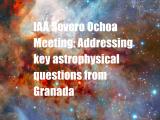
|
13/10/2022
Congreso Severo Ochoa IAA: abordando las cuestiones clave en astrofísica desde Granada El Instituto de Astrofísica de Andalucía (IAA-CSIC) organiza un encuentro con especialistas de todo el mundo sobre los problemas más actuales que afronta la astrofísica |
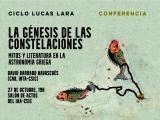
|
27/10/2022 - 19:00
La génesis de las constelaciones. Mitos y literatura en la astronomía griega La esfera celeste se divide en la actualidad en 88 constelaciones. Son agrupaciones aparentes de estrellas que aparecen dibujadas sobre la esfera celeste, en un ejercicio intelectual que mucho tiene que ver con la cultura. Cada civilización ha recreado las constelaciones según sus creencias, aunque las aceptadas por la Unión Astronómica Internacional se basan, sobre todo, en la Era de los Descubrimientos y en la tradición grecorromana.... David Barrado Navascués |
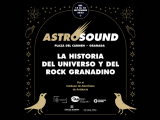
|
15/09/2022
AstroSound 2022 El Instituto de Astrofísica de Andalucía es uno de los mayores centros de referencia en astrofísica y ciencias del espacio a nivel internacional. Además, destaca por su intensa actividad divulgadora; su Unidad de Cultura Científica es una de las más reconocidas de nuestro país, acercando la ciencia a la sociedad a través de formatos rompedores que han sido merecedores de diferentes reconocimientos a lo largo de los últimos años. ASTROSOUND... |

|
19/12/2022 - 12:30
Fossil groups of galaxies: seeing the future looking at the past The nature of fossil groups of galaxies has been debated for over more than 3 decades. This is in part because of the lack of deep multiwavelength data and also due to the low purity of samples selected using solely magnitude gap criteria. The initial results of a sample of bonafide fossil groups using X-ray/optical observations has clarified many of their characteristics, such as high central metal abundances and concentration measurements.... Dr. Renato Dupke |

|
01/12/2022 - 12:30
SO Colloquio: Moving from high to extreme precision in air shower observations: From LOFAR to SKAO Cosmic rays play an interesting role in understanding the most violent objects in the universe. These charged atomic particles reach energies orders of magnitudes higher than achievable in accelerators on Earth, which points towards an origin of the most extreme objects in the universe, with strong magnetic shocks and mass transfer. However, these sources are not firmly identified. Astrophysical interpretations are currently limited by the... Dr. Anna Nelles |

|
17/11/2022 - 12:30
SO colloquio: A conclusive test of the cold dark matter model The ``Lambda cold dark matter'' (LCDM) cosmological model is one of the great achievements in Physics of the past thirty years. Theoretical predictions formulated in the 1980s turned out to agree remarkably well with measurements, performed decades later, of the galaxy distribution and the temperature structure of the cosmic microwave background radiation. Yet, these successes do not inform us directly about the nature of the dark matter. This... Dr. Carlos Frenk |

|
08/11/2022 - 12:30
The many “phases” of small bodies Asteroids, comets, and trans-Neptunian objects are collectively known as small bodies. In a way, they are the debris left by the planetary formation in the Solar system, and as such, they carry a lot of information regarding the processes that shaped it. But, small bodies are by no means stationary objects: not only do they move across the sky, but their brightness also changes due to different mechanisms, from rotational variations due to... Dr. Álvaro Alvarez-Candal |

|
25/10/2022 - 12:30
SO Colloquio: Galactic Center: Radiation from black hole candidates and the dynamics of high velocity stars We summarize recent research results on the radiation mechanism of the Super Massive Black Hole (SMBH) candidate SgrA* and ask the question if there are Intermediate Mass Black Hole (IMBH) candidates in the central stellar cluster. Furthermore we give an update on the most recent high velocity stars in the central arcsecond - that are closest to SgrA*. Here we concentrate on the high velocity star cluster dynamics and on the 4711+ stars with... Prof. Andreas Eckart |

|
26/09/2022 - 12:30
The EnVision mission to Venus: Discovering why our closest neighbour is so different EnVision was selected as ESA’s 5th Medium-class mission in the Agency’s Cosmic Vision plan, targeting a launch in the early 2030s. The mission is a partnership between ESA and NASA. The primary goal is to provide a holistic view of Venus, from its inner core up to its upper atmosphere by a single mission, and will be the first mission of its kind. More specifically, EnVision will characterise Venus’ core and mantle structure, in order to study... Dr. Anne Grete Straume |

|
13/09/2022 - 12:30
SO Colloquio: Studies on the origins of our solar system My goal in this colloquium is to apprehend globally the Solar System by describing a vast sample of small bodies, from Near Earth Asteroids to remote Trans-Neptunian Objects. This goes beyond projects that focused on certain populations only. The core of the talk is theoretical, with emphasis on inner structures and rings. Meanwhile, the stellar occultations by these objects will provide an exploratory route to characterize objects with widely... Dr. Bruno Sicardy |
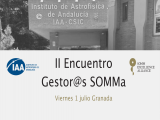
|
29/06/2022
El Instituto de Astrofísica de Andalucía acoge el II Encuentro de Gestor@s de la alianza de centros Severo Ochoa y unidades María de Maeztu, SOMMa. Este viernes 1 de julio tendrá lugar en el Instituto de Astrofísica de Andalucía (IAA-CSIC) el II Encuentro de Gestor@s de la alianza SOMMa. Esta alianza reúne a los Centros de Excelencia Severo Ochoa y Unidades de María de Maeztu acreditadas con este sello, que otorga el Ministerio de Ciencia e Innovación a aquellos centros y unidades de investigación que destacan por su relevancia e impacto a nivel internacional. |

|
06/10/2022 - 12:30
Computational Intelligence in the Big Data Context Computational Intelligence (CI) commonly refers to a variety of bio-inspired and/or human-like techniques that can be applied in optimisation, learning and modelling problems. Broadly speaking, CI comprises Artificial Neural Networks, Fuzzy Sets and Fuzzy Logic and Evolutionary Computation. In the era of big data, CI in conjunction with data mining techniques are expected to help uncover useful knowledge from big data as they are very well... Dr. Isaac Triguero |

|
13/10/2022 - 12:30
New developments at the IAA cosmic dust laboratory The interpretation of astronomical observations of comets and asteroids and of extrasolar objects such as protoplanetary and debris disks is crucial for understanding the origin and evolution of planetary systems. Collecting electromagnetic radiation scattered or emitted by dust particles present in these objects with powerful telescopes is often our only way to observe and characterized them. In situ observations are available for a handful of... Dr. Juan Carlos Gómez |
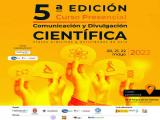
|
20/05/2022 - 22/05/2022
COURSE ON DISSEMINATION TECHNIQUES. RECREATIONAL AND TRAINING DAYS "Practical classes and leisure activities". Granada |

|
13/06/2024 - 12:30
SO colloquium: The magnetised intergalactic medium revealed by SKA Pathfinders Using broadband radio polarimetry we can probe regions of diffuse ionised and magnetised gas that are challenging to detect by other means, such as in the halos of galaxies (CGM), in galaxy groups and clusters (IGrM/ICM), and filaments of the cosmic web (ie. WHIM). Here I will highlight recent results from the LOFAR and ASKAP radio telescopes,which use the effect of Faraday rotation to illuminate the CGM, IGrM, ICM and WHIM gas. In particular, I... Dr. Shane O'Sullivan |

|
10/11/2022 - 12:30
SO Colloquio: The Cherenkov Telescope Array: Status and Prospects The Cherenkov Telescope Array (CTA) will become the reference observatory for Very High Energy (VHE) Gamma Ray Astronomy during the next decades. CTA promises a jump in sensitivity and energy coverage of one order of magnitude over the current instruments, significantly improved energy and angular resolutions and full sky coverage. Over thousand new sources will foreseeably be identified in this range for the first time. VHE gamma rays are... Dr. Juan Cortina |
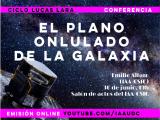
|
30/06/2022 - 19:00
El plano ondulado de la galaxia Conferencia sobre la Vía Láctea, la galaxia que alberga el Sistema Solar Emilio J. Alfaro |

|
28/10/2022 - 12:30
SO Colloquio: Cosmografía: las aportaciones de al-Ándalus y los reinos ibéricos a la Revolución Científica Si el Señor Todopoderoso me hubiese consultado, antes de embarcarse en la Creación, le habría recomendado algo más simple. Esta frase, supuestamente formulada por Alfonso X "el Sabio", muestra la complejidad del conocimiento cosmográfico en al-Ándalus y en los reinos cristianos que recibieron su acervo científico. La península Ibérica se convirtió a partir del siglo X en puente esencial para que el saber de la civilización grecorromana,... Dr David Barrado Navascués |
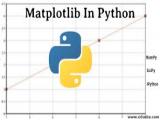
|
15/06/2022 - 15/06/2022
Matplotlib for beginners II - A brief Severo Ochoa training school Online |

|
21/07/2022 - 12:30
SO Webloquio: Cold gas constraints via HI Intensity Mapping in the SKA era Intensity mapping surveys of neutral hydrogen (HI) are a new way to measure the large-scale matter distribution of our universe over a wide range of redshifts, and thus constrain cosmological parameters describing the universal expansion. The next generation of radio telescopes and interferometers - in particular the Square Kilometre Array (SKA) - are being designed and built to include optimising the detection of the HI line at low spatial... Dr. Laura Wolz |
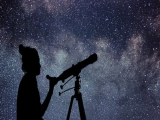
|
17/05/2022 - 18/05/2022
Gender Analysis in Research Granada |

|
11/05/2022
La ciencia, de nuevo, en la Feria del Libro El Instituto de Astrofísica de Andalucía, el Estación Experimental del Zaidín, el Parque de las Ciencias y la Feria del Libro organizan la quinta edición del Área de Ciencia de la Feria del Libro, que se ubicará en la plaza del Humilladero, frente a la Fuente de las Granadas |

|
22/09/2022 - 12:30
SO Web-loquio: Old/new problems with Active Galactic Nuclei and AGN application to cosmology After several decades of studies the basic nature of nuclear activity of galaxies is well understood. However, unexpected behaviour of AGN was already noted in the past, and with rise of the amount of data we see numerous evidences of phenomena which still require explanation, line Quasi-Periodic Ejection sources, and Changing-Look AGN. Also it is now time to address in more detail the physical nature of the simple AGN components like Broad Line... Prof. Bozena Czerny |

|
07/06/2022 - 12:30
Revisiting the intermediate- to high-mass star formation Intermediate and high-mass forming stars have a large impact on the interstellar medium and nearby star forming regions. Historically, the study of the general properties of intermediate- to high-mass pre-main sequence stars has been hampered by the lack of a well-defined, homogeneous sample, and because few and mostly serendipitously discovered sources were known. As a consequence, many open problems involving high-mass star formation suffer... Dr. Miguel Vioque |

|
16/09/2022 - 12:30
SO Colloquium: Sex and gender analysis in research and Innovation This lecture aims to increase researchers’ awareness of the current demands for the inclusion of sex and gender in their research. In fact, several governments and granting agencies, such as the European Commission and the Spanish Agencia Nacional de Investigación (AEI), now require that requests for funding address whether, and in what sense, sex and gender are relevant to the objectives and methodologies of the research proposed. Parallel with... Dr. Capitolina Díaz |

|
01/09/2022 - 12:30
SO Webloquio: Stellar Magnetism and Extra-Solar Space Weather The environment around the Sun and other late-type stars is controlled by magnetic fields. The coronal high-energy radiation (Extreme Ultra-Violet and X-ray photons), the structure and strength of stellar winds, as well as transients such as flares, coronal mass ejections (CMEs), and energetic particle events, are some examples of this magnetic influence. Apart from their direct consequences on the star and its evolution, these phenomena will... Dr. Julián Alvarado-Gómez |

|
23/05/2022 - 12:30
New insight into the magnetism of isolated white dwarfs Many stars evolve into magnetic white dwarfs, but we do not know when the magnetic field appears at their surface, if and how it evolves during the cooling phase, and, above all, what are the mechanisms that generate the field, and why they act on some but not all degenerate stars. Observations may help to find an answer to these questions, but their interpretation is dramatically affected by biases due to target selection and a non-homogeneous... Dr. Stefano Bagnulo |

|
27/10/2022 - 12:30
SO colloquio: A new look at the torus of active galactic nuclei The classical picture to explain the observations of active galactic nuclei (AGN) required a geometrically and optically thick torus of molecular gas and dust to obscure the central engine from some lines of sight. For more than two decades, the torus was believed to be a compact (pc-scale), isolated, and rotating structure. Our recent work in the Galactic Activity, Torus, and Outflow Survey (GATOS), using ALMA and high-angular resolution mid-... Dr. Almudena Alonso Herrero |